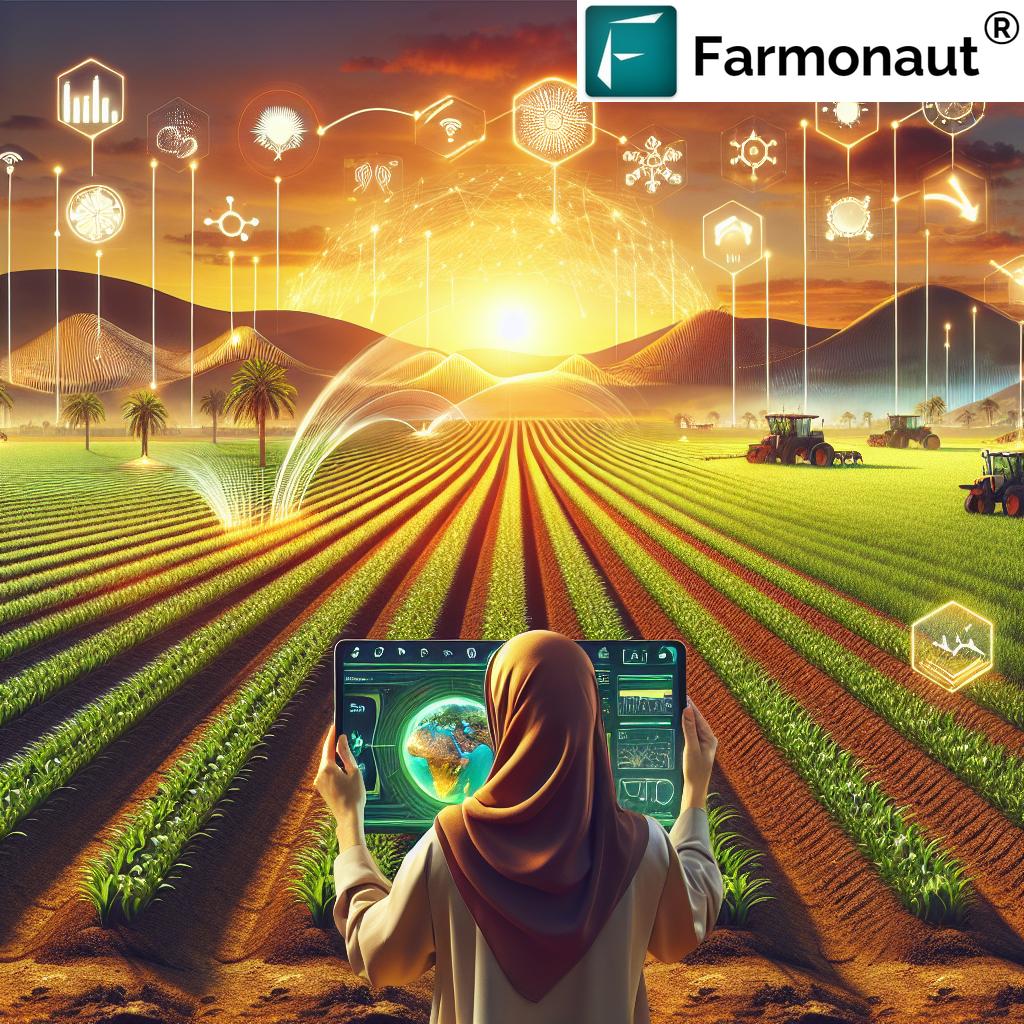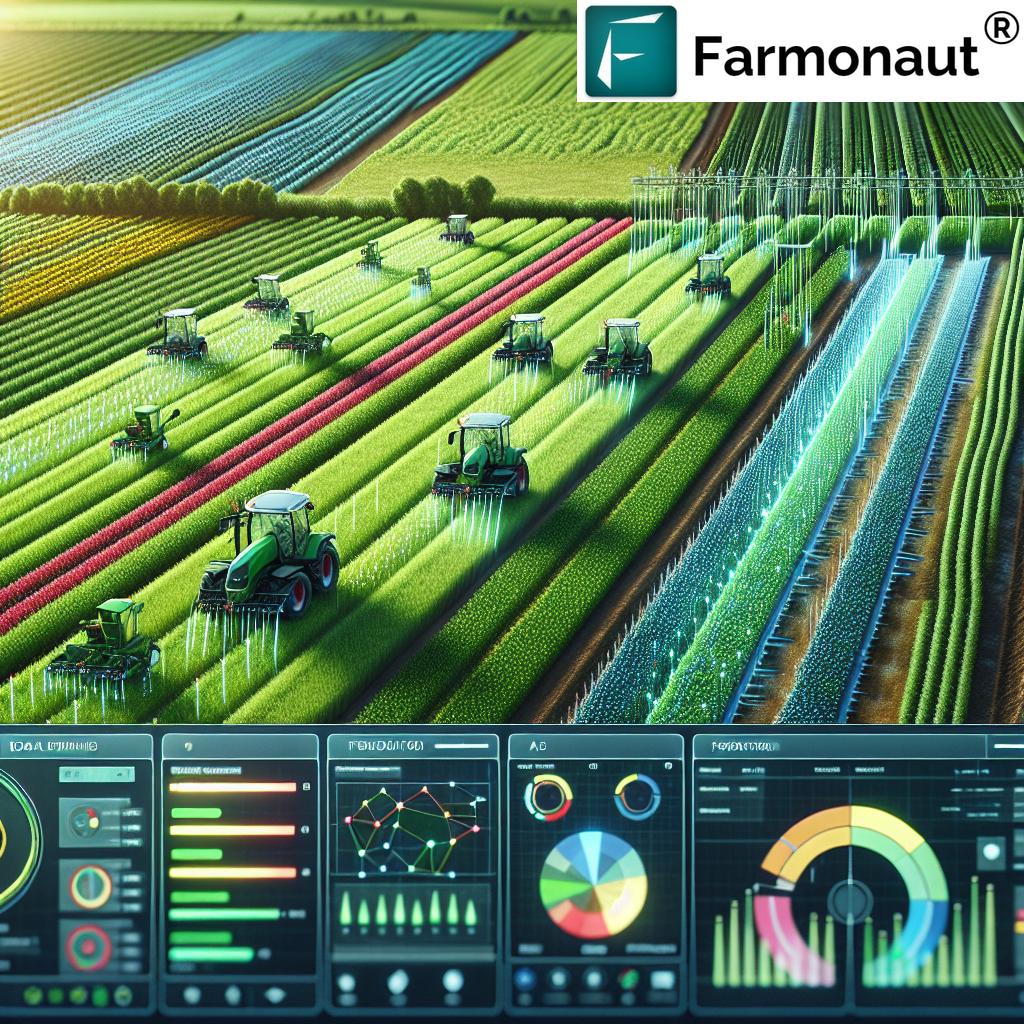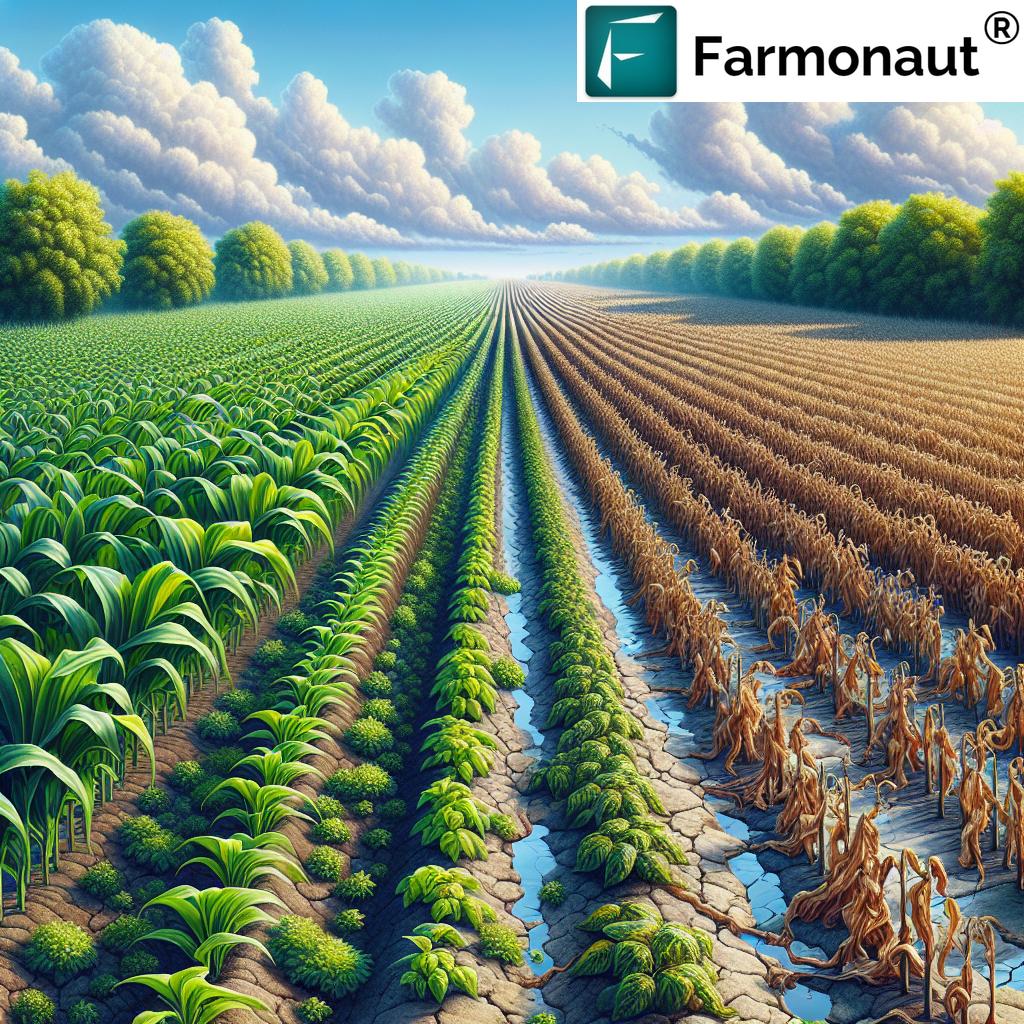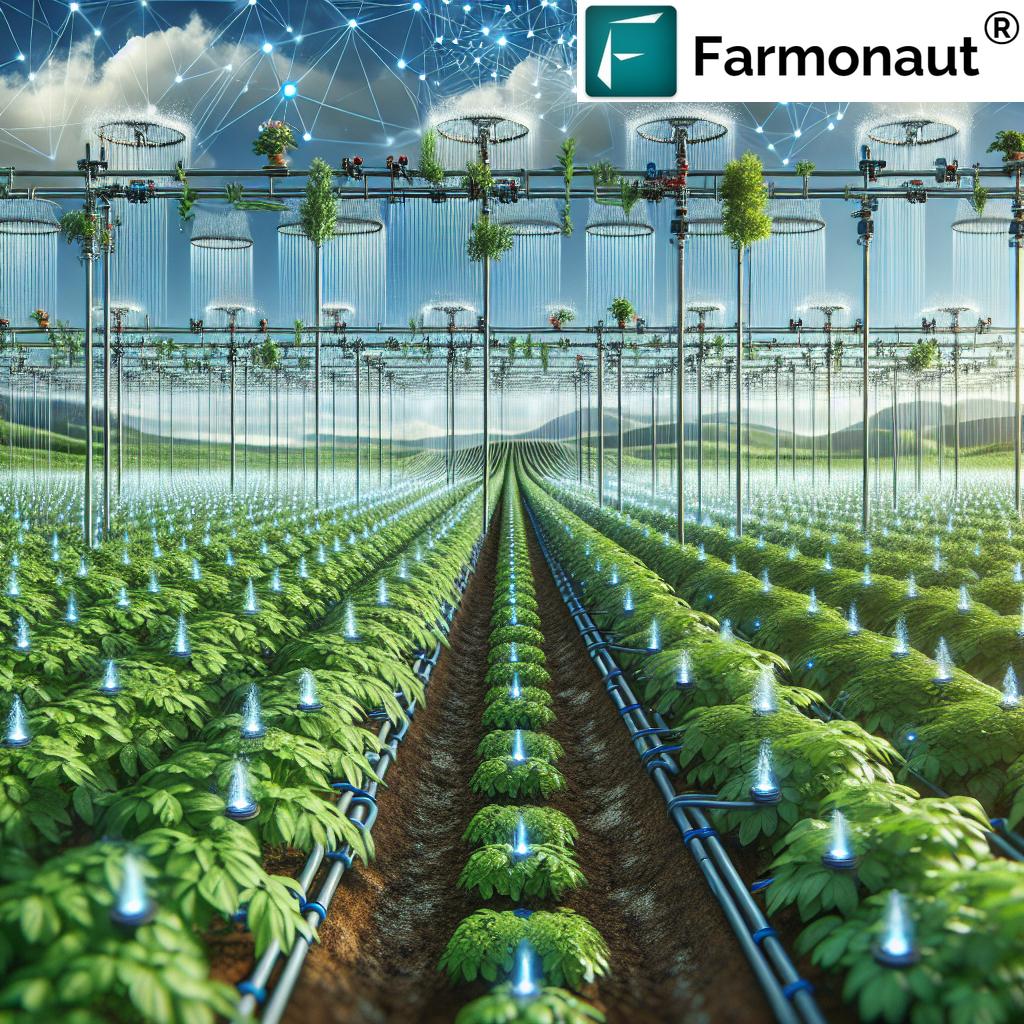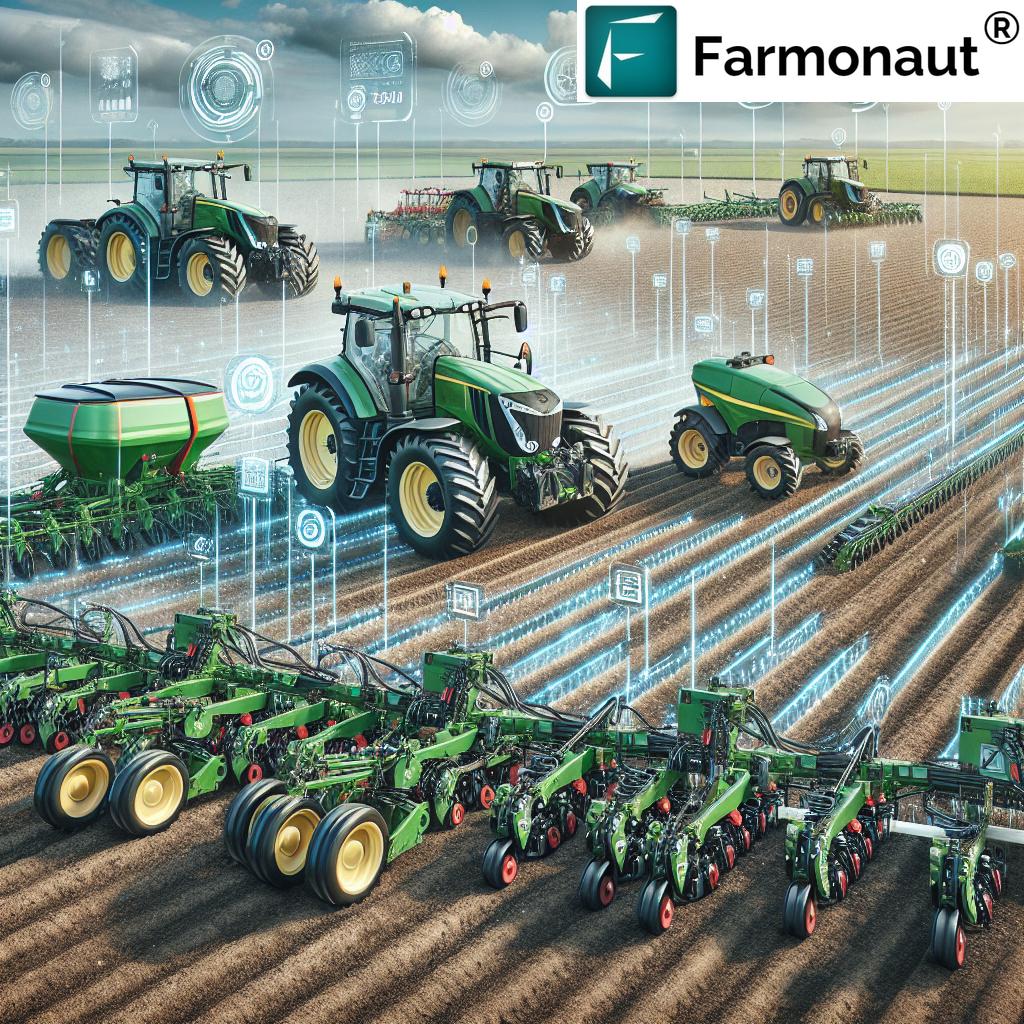5 Powerful Examples of Modern Farming Methods for 2025
Modern farming methods are at the forefront of the global efforts to feed a rapidly growing population while preserving natural resources and combating climate change. In 2025, we witness an era where innovative methods and technology — from satellite-based analytics to vertical farms rising in urban centers — are transforming agriculture for a sustainable future. This article delves into some of the most impactful and sustainable modern farming methods examples that are actively shaping farming practices worldwide.
“Precision agriculture can reduce fertilizer use by up to 20%, significantly lowering environmental impact, according to recent studies.”
Table of Contents
- Introduction – Modern Farming: At the Forefront of Change
- 1. Precision Agriculture: Leveraging Data for Productivity
- 2. Vertical Farming & Controlled Environment Agriculture (CEA)
- 3. Conservation Agriculture: Building Sustainable Soil Health
- 4. Agroforestry: Integrating Trees for Ecosystem Services
- 5. Biopesticides and Biofertilizers: Safer Approaches to Growing
- Bonus: Smart Irrigation Systems — Every Drop Counts
- Comparative Summary Table of Modern Farming Methods
- Farmonaut: Satellite Technology Solutions for Modern Agriculture
- FAQs on Modern Farming Methods in 2025
- Conclusion: Embracing the Future of Agriculture
Modern Farming: At the Forefront of Environmental Change
In an age marked by rapidly evolving technologies and growing population pressures, the agriculture sector finds itself at the heart of a global transformation. Our collective efforts are focused on embedding sustainability into every step of the food production system. This means innovative techniques are not merely optional, but essential, to feed the world while preserving ecosystems, improving farmers’ livelihoods, and protecting our planet’s health.
Here, we explore five impactful examples of modern farming methods set to define productive, resilient, and sustainable agriculture in 2025 and beyond. From precision agriculture that harnesses the power of data analytics and satellite imagery to vertical farms that cultivate crops in stacked layers, discover how these advancements support food security, environmental stewardship, and climate resilience.
1. Precision Agriculture: Leveraging Data for Productivity
Revolutionizing Fields with Technology
Among the most significant examples of modern farming methods is precision agriculture. This approach uses satellite imagery, Internet of Things (IoT) sensors, drones, and advanced analytics to monitor and manage farmland with remarkable accuracy. The aim? To ensure that every input — from water and fertilizers to pesticides — is applied in the precise amounts needed, exactly where and when crops require them.
- Satellite and Drone Monitoring: Track crop health, soil moisture levels, and pinpoint areas of stress or pest outbreaks with real-time insights.
- GPS-Guided Equipment: Modern tractors, planters, and sprayers navigate fields with centimeter-level accuracy.
- Variable Rate Technology (VRT): Distribute inputs like seeds, fertilizers, and water at variably tailored rates across different field zones, reducing waste and environmental contamination.
- AI-Based Decision Making: AI solutions analyze satellite-derived data to optimize resource allocation, improving productivity and reducing environmental footprint.
As a leader in satellite-based agricultural monitoring, Farmonaut empowers farmers and businesses to make informed decisions via our platforms, integrating real-time crop and soil analytics with actionable advisories — accessible through 

 .
.
With powerful APIs and developer documentation, integrating these data-driven solutions into diverse farming, insurance, and supply-chain management systems is easier than ever.
-
Sustainability Impact:
- Reduce over-application of fertilizers and pesticides — minimizing run-off into water resources and soil contamination.
- Enhance yield: Precision farming can boost harvests by 10-20% while using fewer resources.
- Support climate-resilient decisions; efficiently irrigate based on actual soil moisture data, reducing stress in drought-prone areas.
Summary: By revolutionizing traditional farming practices with precise data and automation, precision agriculture stands as a flagship modern farming method example, setting benchmarks in environmental stewardship and resource conservation.
2. Vertical Farming & Controlled Environment Agriculture (CEA)
Growing Up: Maximizing Space & Minimizing Impact
Another modern agriculture example is the rise of vertical farming. In this method, crops are grown in stacked layers inside controlled environments such as greenhouses or repurposed warehouses. This system maximizes limited land availability — a key issue as arable land becomes increasingly scarce in 2025.
Key features:
- LED Lighting Technologies: Mimic sunlight to enable year-round crop growth regardless of outdoor conditions.
- Hydroponics & Aeroponics: Replace soil with nutrient-rich water or mist, allowing precise control of nutrients and improved resource use efficiency.
- Water Savings: Vertical farming uses up to 95% less water compared to traditional farming methods.
- Urban Integration: Brings fresh produce production closer to consumers, reducing food miles and associated emissions.
Vertical farms are highly optimized controlled environment agriculture (CEA) systems, allowing for efficient use of resources, low pesticide inputs, and minimal waste generation. As these novel farms reduce dependency on arable land, they contribute to food security in both urban and rural areas.
With sophisticated environmental controls for temperature, humidity, and CO2 levels, and innovations like AI monitoring of crop health (see Farmonaut’s real-time AI-based monitoring solutions), vertical farming stands as a compelling example of sustainable farming methods for the future.
For developers and agribusinesses seeking data-driven insight into urban horticulture or rooftop farm monitoring, consider integrating Farmonaut API solutions.
Benefits of Vertical Farming in 2025:
- Year-round fresh produce, unaffected by seasonal volatility or climate extremes.
- Up to 30x higher output per square meter compared to traditional open-field farming.
- Substantial reductions in pesticide use due to controlled indoor settings.
- New employment opportunities in urban settings, boosting local food economies.
3. Conservation Agriculture: Building Sustainable Soil Health
Minimal Disturbance, Long-Term Resilience
As we head toward the future of sustainable agriculture, conservation agriculture emerges as a vital system focused on preserving natural resources and improving soil health. This method opposes conventional intensive tillage, instead emphasizing minimal soil disturbance, permanent organic soil cover, and smart crop rotation strategies.
Core Principles:
- Minimal Tillage: Avoids unnecessary plowing, preserving soil structure stability and reducing erosion.
- Permanent Ground Cover: Uses cover crops, mulch, or grass to retain moisture, suppress weeds, and offer habitat for beneficial organisms.
- Crop Rotation: Alternates crops — breaking pest cycles, reducing disease risk, and naturally replenishing soil nutrients.
Environmental Impact:
- Boosts carbon sequestration — turning farmland into a carbon sink and helping mitigate the effects of climate change.
- Enhances soil biodiversity and health, sustaining productivity for generations.
- Reduces need for chemical pesticides and synthetic fertilizers, further preserving the environment.
Conservation agriculture is a primary driver for carbon footprint monitoring. If you’re an agronomist, policymaker, or farm manager invested in reducing emissions and boosting soil resilience, leveraging real-time environmental impact tracking through advanced satellite solutions is invaluable for both performance and compliance in 2025.
Innovative Conservation Practices:
- Use of soil moisture sensors for smart irrigation, conserving water while ensuring good crop yields.
- Application of AI-based weather forecasts (like Farmonaut’s Jeevn AI Advisory) for risk assessment and operational planning.
Summary: Conservation agriculture is a robust, scalable, and truly sustainable farming method that both improves productivity and reduces environmental impact.
“Vertical farming uses up to 95% less water compared to traditional farming methods, promoting efficient resource management.”
4. Agroforestry: Integrating Trees for Ecosystem Services
Enriching Farmlands with Forest Wisdom
Agroforestry is another innovative approach to sustainable agriculture in 2025, forming a bridge between agriculture and natural forests. By integrating trees, crops, and sometimes livestock on the same plot, it maximizes biodiversity, enhances resilience, and creates a self-sustaining ecosystem.
Features that Set Agroforestry Apart:
- Reduces wind erosion with natural windbreaks, protecting soil and young plants.
- Improves soil health by adding organic matter through falling leaves and roots.
- Enhances water infiltration and retention.
- Provides shade that moderates farm temperatures, reducing heat and water stress for crops and livestock.
- Supports pollinators and beneficial organisms, increasing ecosystem stability.
- Opens new revenue streams: timber, fruits, nuts, resins, and medicinal products.
- Increases carbon capture compared to monoculture croplands.
Agroforestry systems are especially effective in tropical and subtropical regions, where land degradation and deforestation are acute. However, new sensor and drone technologies allow these systems to be mapped, monitored, and managed even in temperate and urban fringe contexts — providing true versatility.
For forward-thinking landowners and businesses, large-scale farm management tools — like those on Farmonaut’s platform — provide tailored, satellite-based analytics that empower effective management of rotational farming, integrated forestry, and conservation landscapes.
5. Biopesticides and Biofertilizers: Safer Approaches to Growing
Embracing Biological Solutions for Soil and Plant Health
Modern sustainable farming is increasingly defined by the move away from conventional synthetic chemicals toward biopesticides and biofertilizers. These natural, biological inputs — derived from beneficial microorganisms, fungi, or plant extracts — bolster plant defenses, improve soil fertility, and maintain ecological balance.
Major Benefits:
- Reduced chemical residue on food products, supporting public health and organic markets.
- Enhanced soil microbiome diversity — ensuring the long-term health and fertility of farmland.
- Effective pest control with minimal resistance buildup and non-target impact.
- Alignment with consumer demand for chemical-free, organic produce.
These approaches are often used in tandem with precision farming for optimal targeted application and conservation agriculture to accelerate soil regeneration. Technological advancements in AI-based remote sensing (available via Farmonaut APIs) make it possible to measure soil and plant health, quickly identifying problems and enabling timely intervention.
Examples of Sustainable Farming Methods:
- Application of Bacillus-based biofertilizers to improve phosphorus availability in soil.
- Incorporating Trichoderma fungi for plant disease control.
- Spraying Neem oil extracts for managing pests in leafy vegetables.
Summary: The integration of biopesticides and biofertilizers is not simply a nod to organic agriculture; it is a science-backed shift toward improving soil, crop health, and securing a sustainable future.
Bonus: Smart Irrigation Systems — Every Drop Counts
Water scarcity is a growing challenge for agriculture in 2025. Smart irrigation systems combine soil moisture sensors, satellite weather forecasts, and automated controls to deliver the right amount of water at the right time — directly to each plant’s root zone.
Drip irrigation — paired with remote sensing data — can reduce water use by up to 70% compared to traditional flood methods, while maintaining or increasing crop yields. Remote-controlled distribution systems also minimize labor and run-off, preserving the environment and enhancing efficiency.
- Ideal for regions facing erratic rainfall and drought conditions.
- Improves farm resilience under climate change scenarios.
- Enables precision fertigation — applying soluble nutrients via the drip network for targeted plant nutrition.
When combined with Farmonaut’s crop monitoring and advisory services, farmers and agribusinesses gain instant visibility into water needs, soil health, weather risks, and irrigation scheduling, ensuring every drop makes a difference.
Comparative Summary Table of Modern Farming Methods
| Method Name | Brief Description | Estimated Yield Improvement (%) |
Resource Efficiency Increase (%) |
Environmental Impact | Example Application |
|---|---|---|---|---|---|
| Precision Agriculture | Data-driven monitoring using satellite, IoT sensors, & drones for precise resource application | 10–20% | 10–30% | Up to 20% less fertilizer use; reduced emissions & run-off | Variable-rate fertilizer in maize fields with yield mapping |
| Vertical Farming | Crops grown in stacked layers in controlled environments, using hydroponics or aeroponics | 15–30x production/m2 | Up to 95% less water; 70% less land | Minimal pesticide use; drastically reduced water footprint | Urban lettuce farm using LED lighting & climate control |
| Agroforestry | Integration of trees, crops, and/or livestock for ecosystem-based farming | 5–20% | 20–50% | Higher carbon sequestration; improved soil & water retention | Alley cropping of maize with nitrogen-fixing trees |
| Hydroponics | Soil-free cultivation using nutrient-rich water for plant roots | 20–25% | Up to 90% less water | No soil erosion; efficient nutrient cycling | Greenhouse tomatoes with recirculating solution |
| Regenerative Agriculture | Practices focusing on soil regeneration, biodiversity, and carbon drawdown | 10–30% | Up to 50% | Increases soil organic carbon by up to 0.5t/ha/year | No-till, cover crops & rotational grazing on mixed farms |
Farmonaut: Satellite Technology Solutions for Modern Agriculture
The future of modern farming methods relies on actionable insights derived from high-quality data. At Farmonaut, we leverage multispectral satellite imagery, AI analytics, and blockchain solutions to deliver real-time, affordable, and scalable tools for crop health monitoring, soil moisture tracking, carbon footprint calculation, and supply chain traceability.
Our goal is to empower individual farmers, businesses, and governments to optimize resources and accelerate the adoption of sustainable farming practices in 2025 and beyond:
- Real-Time Crop and Soil Monitoring: Detect stress, pest outbreaks, and water deficits swiftly to enable timely interventions and maximize yields. See a quick demo of our satellite-based AI monitoring system in this video:
- Fleet and Resource Management: Optimize machinery use and logistics with fleet management tools, improving operational efficiency and safety.
- Environmental Impact Tracking: Quantify carbon emissions reductions for compliance and sustainability reporting using carbon footprinting modules.
- Blockchain Traceability: Enhance transparency of supply chains and build consumer trust with traceability tools for sustainable and secure produce sourcing.
- Insurance and Financing: Enable financial inclusion and risk assessment for farmers through satellite-based loan & insurance verification.
- Scalable Farm & Plantation Management: Our Agro Admin App supports everything from crop rotation records to advisory scheduling across vast operations.
By embracing these examples of modern farming methods empowered by next-generation technologies, we pave the way for an agricultural system that improves productivity, reduces environmental impact, embraces sustainability, and builds a resilient food future.
FAQs on Modern Farming Methods in 2025
What are the best examples of modern farming methods?
Some of the most impactful modern farming examples include precision agriculture (using data and sensors for targeted input application), vertical farming (growing crops indoors in stacked layers), conservation agriculture (minimal tillage and crop rotation), agroforestry (combining trees with crops/livestock), and the use of biopesticides and biofertilizers for natural pest and nutrient management.
How do modern farming methods improve sustainability?
Modern methods adopt environmental best practices: reducing artificially high input use, preserving natural water and soil resources, supporting biodiversity, lowering emissions, and improving land productivity, all of which contribute to climate resilience and food security in the future.
What role does technology play in modern agriculture?
Technology is central: satellite imagery, AI analytics, IoT sensors, drones, and blockchain are used for monitoring crop status, optimizing resource management, ensuring traceability, predicting risks, and supporting data-driven agricultural management.
Are these methods suitable for smallholder farmers?
Yes. Scalable, affordable platforms (like Farmonaut’s) provide access to satellite-based insights and advisory tools customized to field size, region, and crop type, supporting both small and large farms in adopting modern, sustainable practices.
How do modern methods help in combating climate change?
By improving resource efficiency, minimizing unnecessary input use, expanding agroforestry and regenerative practices, and using real-time monitoring to optimize every decision, modern agriculture directly lowers emissions and builds resilience against climate change impacts.
Where can I access modern farming data and monitoring tools?
You can access reliable, real-time agriculture data via Farmonaut’s Android, iOS, and web apps  , or integrate field insights using the Farmonaut API.
, or integrate field insights using the Farmonaut API.
Conclusion: Embracing the Future of Agriculture
Modern farming methods are crucial pillars for food security, environmental preservation, and resilient rural communities in 2025 and beyond. By evolving beyond traditional practices and embracing innovation, the agricultural sector is prepared to meet the dual challenge of increasing productivity and reducing environmental impacts.
These examples of modern farming methods — precision agriculture, vertical farming, conservation agriculture, agroforestry, and bio-based inputs — all push the boundaries of what’s possible. Farmonaut’s suite of satellite-based technologies and AI-driven insights empower stakeholders at every level to optimize yields, minimize costs and emissions, and contribute to a future that is truly sustainable.
Let us move forward together, embracing sustainable agriculture, protecting natural resources, and ensuring a healthy food system for current and future generations.


